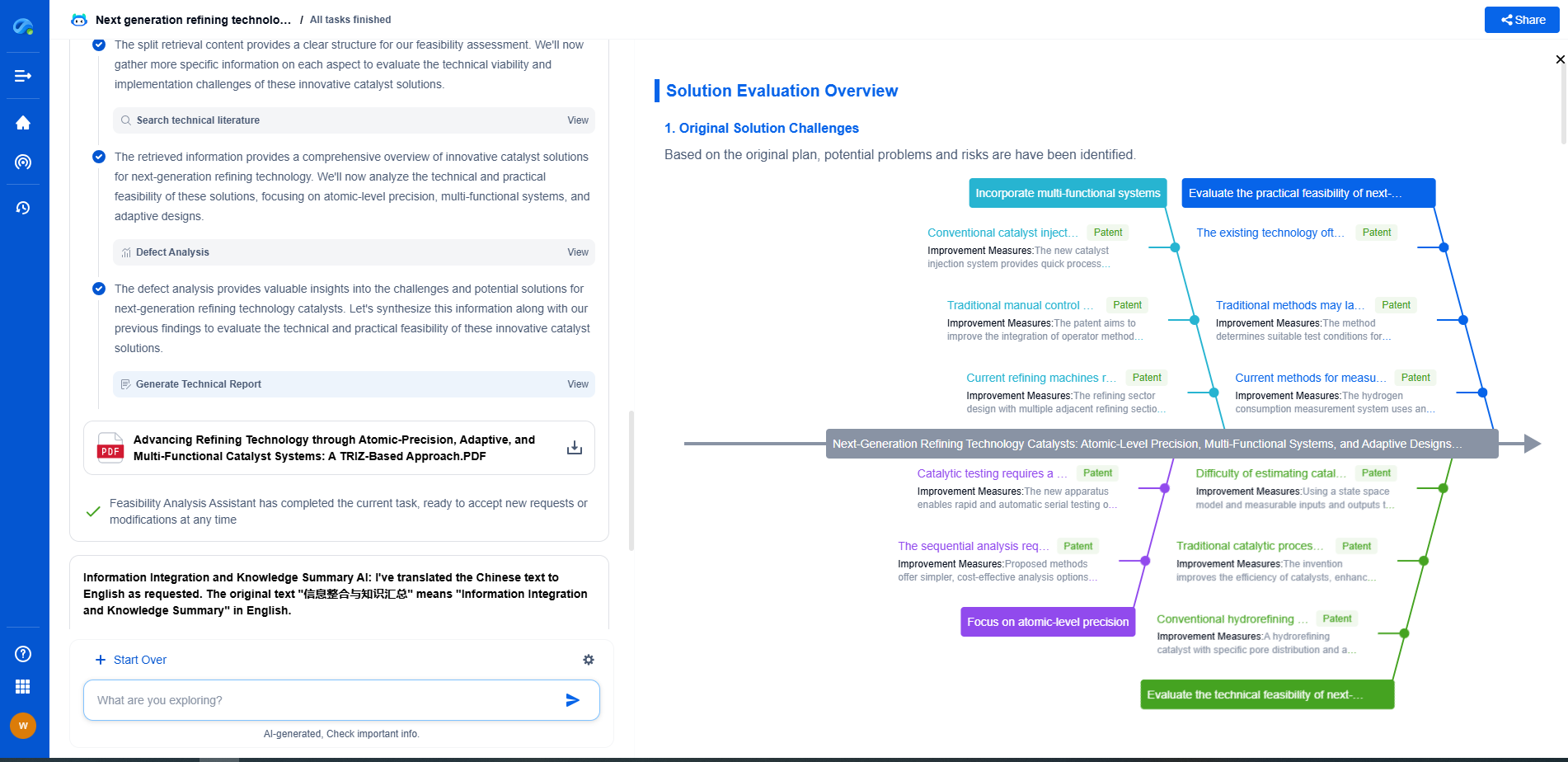How does a robot safety controller work?
JUN 26, 2025 |
As robotics becomes increasingly integrated into various industries, ensuring the safety of both human workers and equipment is paramount. This is where robot safety controllers come into play. These devices are fundamental in creating a safe working environment when humans and robots share the same space. Let’s take a closer look at how these safety controllers function, their components, and their importance in modern robotics.
The Role of Robot Safety Controllers
Robot safety controllers are designed to prevent accidents by ensuring that robots operate within defined safety parameters. They act as a mediator between the robot's control system and the physical environment, monitoring the robot's actions and interrupting them if necessary to avoid hazardous situations. By enforcing safety protocols, these controllers reduce the risk of injury and equipment damage.
Components of a Robot Safety Controller
A typical robot safety controller consists of several key components:
1. Sensors: These are crucial for detecting the robot's position, speed, and surrounding environment. Sensors can include cameras, proximity sensors, and pressure sensors, among others. They provide real-time data that the safety controller uses to assess whether the robot is operating safely.
2. Control Unit: This component processes the sensor data and determines the necessary action. If the data indicates a potential safety risk, the control unit can trigger pre-defined safety measures, such as slowing down the robot, redirecting its path, or initiating an emergency stop.
3. Communication Interfaces: These allow the safety controller to communicate with the robot's main control system and any other connected devices. Effective communication ensures that all systems are aware of the robot’s status and can respond appropriately to changing conditions.
4. Actuators: In the event of a safety breach, actuators can physically alter the robot's actions based on commands from the controller. This might include stopping the robot, adjusting its speed, or changing its trajectory.
Safety Protocols and Standards
Robot safety controllers are designed to comply with international safety standards such as ISO 10218 for industrial robots and ISO 13849 for machine safety. These standards provide guidelines for designing and implementing safety measures to protect humans and equipment. Adhering to these protocols ensures that the controllers can effectively manage risks associated with robotic operations.
Operational Mechanisms
The operational mechanism of robot safety controllers typically involves a closed-loop system where continuous feedback is provided to evaluate current conditions against preset safety criteria. If the system detects a deviation from safe operation, the controller acts immediately to mitigate the risk. This approach allows for adaptive responses to unforeseen events, ensuring an ongoing assessment of the environment.
Benefits of Implementing Safety Controllers
The implementation of robot safety controllers brings numerous benefits to industrial settings. They enhance workplace safety by minimizing the potential for human error and mechanical failure. This leads to higher productivity, as workers can focus on their tasks without constantly monitoring the robots. Additionally, they extend the lifespan of the machinery by preventing collisions and other forms of physical stress.
Challenges and Future Directions
While robot safety controllers are highly effective, they are not without challenges. Integrating these systems into existing operations can be complex and may require significant upfront investment. Furthermore, as robotic systems become more advanced, safety controllers will need to evolve to handle increased complexity and autonomy.
Looking to the future, advancements in artificial intelligence and machine learning are expected to enhance the capabilities of robot safety controllers. These technologies will allow for more sophisticated decision-making processes, enabling robots to operate safely in even more dynamic environments.
Conclusion
Robot safety controllers are an indispensable part of modern robotics, providing essential safeguards that protect both human workers and machinery. As the field of robotics continues to advance, the development of more sophisticated safety controllers will be vital in ensuring that robots can work alongside humans in a safe and efficient manner. By understanding how these systems operate, industries can better prepare for the integration of robotic technologies into their workflows.
Ready to Redefine Your Robotics R&D Workflow?
Whether you're designing next-generation robotic arms, optimizing manipulator kinematics, or mining patent data for innovation insights, Patsnap Eureka, our cutting-edge AI assistant, is built for R&D and IP professionals in high-tech industries, is built to accelerate every step of your journey.
No more getting buried in thousands of documents or wasting time on repetitive technical analysis. Our AI Agent helps R&D and IP teams in high-tech enterprises save hundreds of hours, reduce risk of oversight, and move from concept to prototype faster than ever before.
👉 Experience how AI can revolutionize your robotics innovation cycle. Explore Patsnap Eureka today and see the difference.
- R&D
- Intellectual Property
- Life Sciences
- Materials
- Tech Scout
- Unparalleled Data Quality
- Higher Quality Content
- 60% Fewer Hallucinations
Browse by: Latest US Patents, China's latest patents, Technical Efficacy Thesaurus, Application Domain, Technology Topic, Popular Technical Reports.
© 2025 PatSnap. All rights reserved.Legal|Privacy policy|Modern Slavery Act Transparency Statement|Sitemap|About US| Contact US: help@patsnap.com

